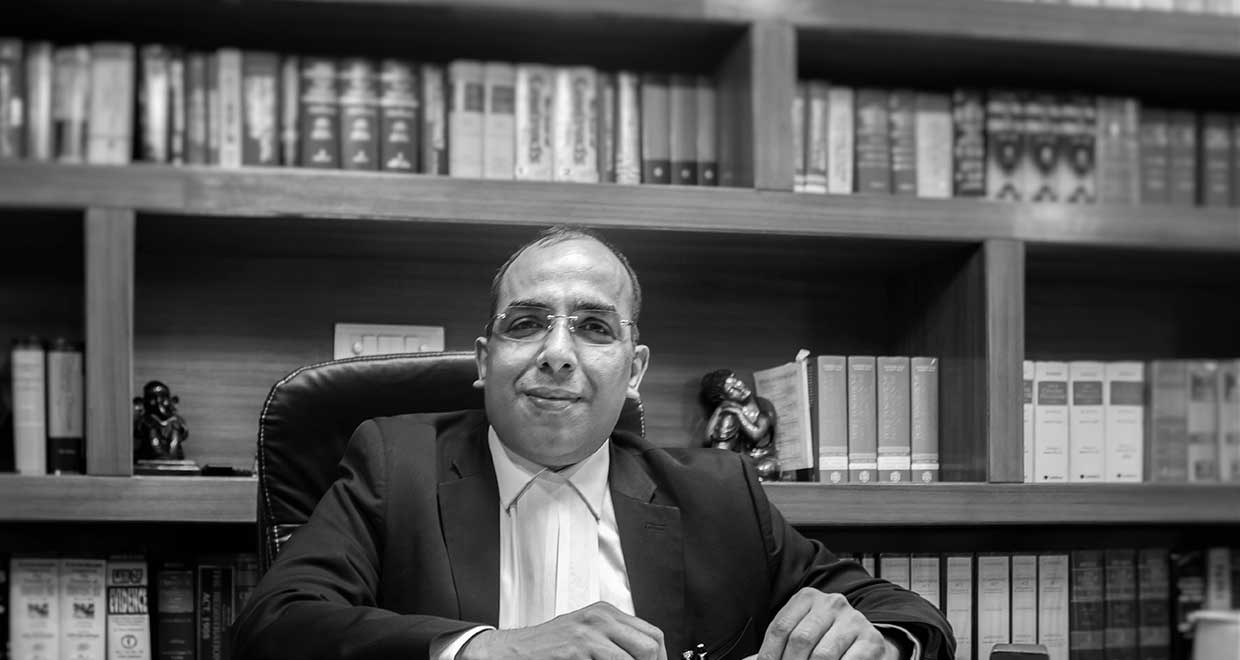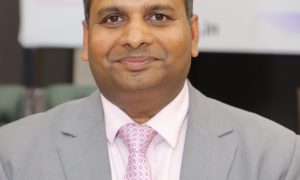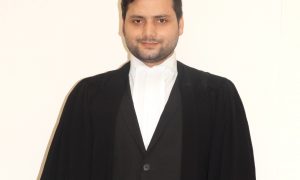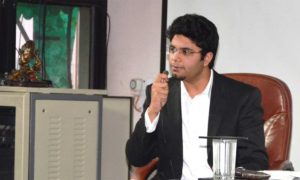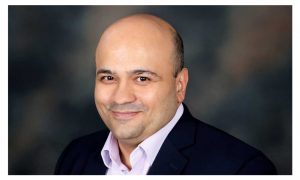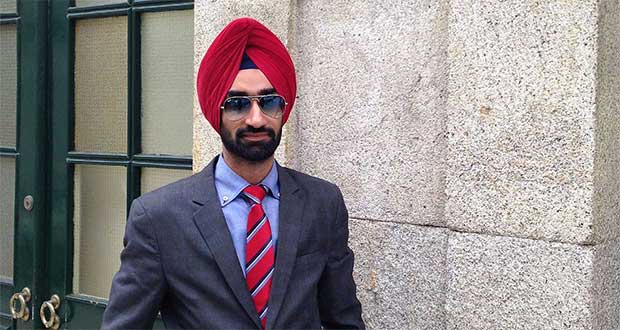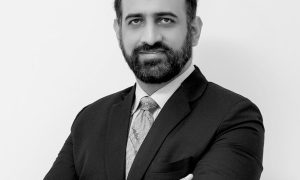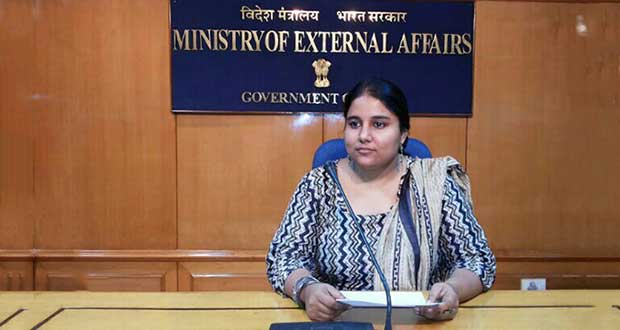Ramakant Gaur graduated from Chaudhary Charan Singh College, Meerut in 1995. He is a game changer, defense lawyer for the complex litigations of Economic-Corporate-real estate disputes involving the criminal laws. He examines the matters closely like an investigator; ponders the prosecution’s point of view and then envisions the strategy for the defence, with his substantial experience.
He has excelled in prosecution cases instituted by the Indian Dept. of Customs & Central Excise, Directorate of Revenue Intelligence (DRI), Directorate General of Central Excise Intelligence (DGCEI), Central Economic Intelligence Bureau, Enforcement Directorate, Economic Offense Wing and Crime Branch of Multi State Jurisdictions, Income Tax dept. etc. He has efficaciously pleaded as defence attorney, in the cases involving prevention of money laundering laws, Corruption laws & anti-drugs laws.
In this interview he talks to us about:
- The ways in which money laundering takes place.
- Laws before and after Prevention of Money Laundering Act, 2002.
- Lessons to be learn from various financial scams in India and abroad.
- Role of national and international agencies to curb issue of money laundering.
- Preventive measures taken to curb the flow of black money.
What are the ways in which money laundering takes place?
Money laundering is a way to filter and convert ill-gotten money and conceal its illegitimate source so that it appears that the original source is a legitimate one. It is prevalent in many forms world-wide such as Hawala transactions, shell companies, terror financing, smurfing, etc. The scamsters or the money launderers generally follow these three steps, firstly, Placement of the proceeds of crime into the financial system, followed by Layering or doing away with the original source of illicit funds, and then Integrating the same into the financial system.
What are the laws before and after Prevention of Money Laundering Act, 2002? What major amendments took place?
Until 2002, several authorities under IT Act, Benami transactions Act, etc. adjudicated over the issue of money laundering, but with the alarming rate of transnational criminal financial activities, a need for holistic legislation gave way for the enactment of PMLA 2002. It has the provisions for the confiscation of tainted properties and was amended thrice, first in 2005, then in 2009 and then 2012. The PMLA (Amendment) Act, 2012 has enlarged the definition of money laundering by including activities such as concealment, acquisition, possession and use of proceeds of crime as criminal activities. Some other features are as follows: The amendment has introduced the concept of Corresponding law to link the provisions of Indian law with the laws of foreign countries and to provide for transfer of the proceeds of foreign predicate offence committed in any manner in India. It also adds the concept of ‘reporting entity’ which would include a banking company, financial institution, intermediary or a person carrying on a designated business or profession. The Prevention of Money Laundering Act, 2002 levied a fine up to Rs 5 lakh. The amendment act has removed this upper limit. The act has provided for provisional attachment and confiscation of property of any person (for a period not exceeding 180 days). This power may be exercised by the authority if it has reason to believe that the offence of money laundering has taken place. Part B of the Schedule in the erstwhile Act included only those crimes that are above Rs 30 lakh or more whereas Part A did not specify any monetary limit of the offence. The amended act has brought all the offences under Part A of the Schedule to ensure that the monetary thresholds do not apply to the offence of money laundering.
What are the objectives of Prevention of Money Laundering Act, 2002?
The Act was introduced in order to combat and deal with the menace of Money Laundering and incidental activities in the nation in lines with India’s international obligation under the UN General Assembly’s resolution adopted in its Political Declaration and Global Program against Action. The Act majorly provides for the confiscation of the property obtained out of the proceeds of crime. It also imposes various obligations on banks, financial institutions and intermediaries to maintain records of all cash transactions. As the basic principles of evidence say that the burden to proof is on the part of the prosecution to prove the, this is the only statute where the onus lies on respondent to prove the legit source of income.
Please share with us the success story of PMLA so far in the light of judicial pronouncements. Highlight some scandals and case studies.
The PMLA has played undoubtedly played a deterrent role when it comes to combat/curb the menace of money laundering. The Enforcement Directorate, with the vigilant efforts made by FIU, CBDT, CBI, RBI and SEBI has confiscated crores of movable and immovable properties in the span of few years which were allegedly obtained from the proceeds of crime. It has spared absolutely nobody. From two tier-city businessmen to top-notch names have find a mention in the hit-list of ED such as Vijay Mallya, Chagan Bhujbal, Subhrata Roy to name a few. As per the statute, ED has also attached properties situated abroad. The latest highlights being Augusta Westland case, Kingfisher fiasco, NSEL case, Kartik Chidambram and many more. ED has been absolutely ruthless in cracking down these alleged people.
What are the lessons to be learnt from various financial scams in India and abroad?
To name any financial debacle in particular, would be an understatement. India has seen the infamous Hawala transactions, Satyam scam, chit fund scams, Ketan Parikh and Harshad Mehta, to name a few. They admonish towards the fact that banks and financial institutions have to be brought under the radar of regulatory and enforcement agencies. The cash transactions also have to be dragged under certain threshold limits.
The success of RICO Act of USA, originally used to prosecute US Mafias US involved in organised crimes during 1980s, led to number of trials and convictions. It has a strong harmonious network with various enforcement agencies. On similar lines, creation of SIT on black money as a watchdog has taken a leap in investigation of black money in and out of India. As per the latest report of SIT, the data provided by the enforcement authorities shows that there are gaps in monitoring trade flows which are used by unscrupulous elements to take out precious capitals outside the country and thus damaging the fabric of the Indian economy and in order to deal with the same, the SIT has asked RBI to establish an institutional mechanism to track illicit financial flows and share data with other law enforcement agencies such as ED,DRI and CBDT and from the said data base various agencies can gather the relevant information for taking early appropriate action. This is so since the data available with one agency can be relevant to action expected to be taken by other law enforcement agency.
What is the role of national and international agencies to curb issue of money laundering?
Various special courts have been set up by the virtue of this Act for the purpose of trial of scheduled offences. The Enforcement Directorate has been responsible for the investigation and Prosecution of cases under PML. The Financial Intelligence Unit India (FIU-IND) is the nodal agency for the dissemination and analysis if the information pertaining to the suspicious financial activities. Apart from these, RBI, SEBI, CBDT, Police have been active at different levels to look into flow of Black money.
At the international level, with the initiatives of UN Financial Action Task Force (FATF) was formed in 1989 to set standards and formulate policies to combat money laundering. It is today one of the most efficient organization working towards this directions, especially on Combating the Financing of Terrorism (CFT). UN and many .other nations have enacted stricter laws on money laundering as well.
What preventive measures are taken to curb the flow of black money?
Government enacting Black Money Act 2015 has been seen showing light at the end of the tunnel from where undisclosed foreign income enters into Indian system as it has stricter penalties for offences since it was the need of the hour. Also India has signed many Double Tax Avoidance Agreements, SIT has been setup to investigate this issue, and Income Declaration Scheme 2016 have been introduced, strict KYC norms to be followed by banks, Tax Information Exchange (TIE) Agreements are proposed and many other precautionary measures have been taken.
SIT has been proposing several recommendations in this regard such as a ban on cash transactions above Rs. 3 lakhs and restricting cash holdings with individuals upto Rs. 15 Lakhs; then it has suggested to establish KYC registry; prior detection of the shell companies with the help of intelligence gathering and entrusting Serious Fraud Investigation Office (SFIO) to regularly mine the MCA 21 database for certain red flag indicators; to check upon the misuse of Participatory notes through KYC norms so as to detect the beneficial owner with the help of PAN card number. It has also suggested that all the cases pertaining to trade-based money laundering should be shared with ED by DRI so as to initiate investigation under PMLA. Therefore, our law-makers have set up the panacea to the problem of black money but its effective enforcement will be testified over the time.
What are the loopholes in the current legal regime in India?
So far as prevention of money laundering is concerned it has been fairly able to do justice, but still it has certain grey areas. Real estate sector, jewellery and bullion, and NGOs are the most vulnerable sectors for occurrence of illicit financial transactions. Inadequate scrutiny structure for cash transactions, inefficient system to preserve confidential financial system and liberal attitude towards the non taxpayers are a few areas where our legal system is lagging behind.
As, a defence lawyer of prevention of money laundering cases, it has been observed that the process of attaching properties of the accused by ED has ,mostly been done even before filing of any criminal complaint or a chargesheet been filed and thus infructuous. There is a lot that has to be done by all the vigilance authorities other than targeting big names and getting affected by media trials. The present situation demands major amendments in the grounds/process of attaching the properties under PMLA as till date this process has turned out to be absurd.
What were the challenges you faced in shaping up your career as it stands today?
There is no competition or challenge in the space whereas there are challenges, struggle and obstacles on the road. I preferred to create a space and develop a niche, reign of the economic loss. I had beaten the competition or challenge through strategy executed with the support of a flamboyant team.
What would be your parting message to our readers?
There is no shortcut to the success except hard-work. Before entering into the professional reign, study the market. No client looks for the ordinary lawyer. Start your career as a champion and excel.

